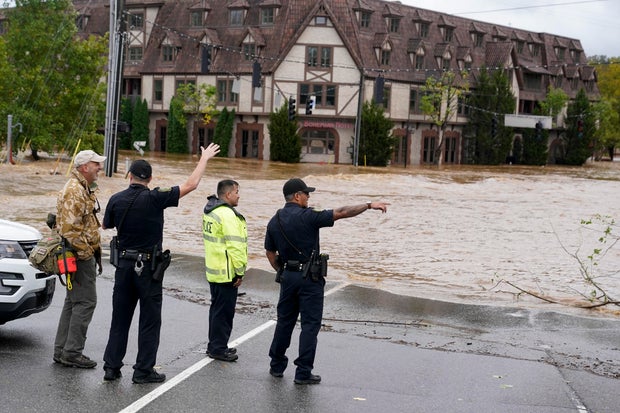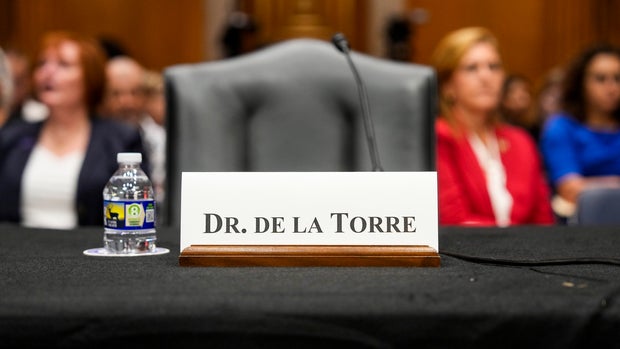CBS News
This morning’s “parade of planets” proved “underwhelming.” NASA gave a date for an even better and brighter one.

You may have heard about a “parade of planets” that was set to grace the early morning skies on Monday morning with a rare celestial event. But if you missed it, don’t worry – experts say you were misled, and there will be another time soon to better see a planetary lineup.
Talk of the June 3 “parade of planets” seemed to stem from a social media post from the space news site “Latest in Space.” In a May 21 post, Latest in Space said that “in a rare event, six planets will align in a straight line on Monday (June 3) just before sunrise in the northern hemisphere,” claiming that Mercury, Jupiter, Uranus, Mars, Neptune and Saturn “will all be visible.”
Many quickly took it to mean that all of the planets would be visible to the naked eye. But according to the experts, no such “spectacular celestial event” was set to appear this morning.
According to space news site Space.com, planets simply cannot be seen as disks to the naked eye – even the brightest ones will twinkle as stars. The set positioning of the planets this morning also proved problematic to the event, as Mercury and Jupiter “will be very close to the position of the sun in the sky and thus likely will be masked by the brilliant glow of morning twilight,” the website said. The two planets could be visible with binoculars, but one would need a flat horizon and no obstructions to see them, the site said.
Uranus is visible to the naked eye, but only in dark and non-polluted skies, but because it was only set to rise about an hour before sunrise this morning, the sky was already too bright to really see it.
“If you step outside at around 3:30 or 4 a.m. on Monday morning, don’t expect to be awed by the sight of a planet parade,” Space.com said. “What you will likely see is a crescent moon and a bright orange ‘star’ shining to its right (Mars) and farther off to the right will be another relatively bright ‘star’ glowing with a yellowish-white hue (Saturn).”
The website also noted that while seeing such a parade would be rare, planets aligning isn’t a rare event as they are all on an orbital plane.
NASA has also confirmed that Monday morning’s alignment wasn’t all that it was cracked up to be.
“In reality, only two of the six planets supposedly on display (Saturn and Mars) will actually be visible,” NASA said. “In early June, Jupiter and Mercury will be at or below the horizon in morning twilight and not visible; Uranus and Neptune are far too faint to see without a telescope, especially as the morning sky brightens.”
The closest thing to a “parade of planets” will happen on June 29, NASA said, when Saturn, the moon, Mars, and Jupiter will line up in the morning.
NASA/JPL-Caltech
Space.com also noted another planetary lineup that’s set for next winter. According to the site, the moon, Saturn, Venus and Jupiter will be aglow in the early evening sky on Jan. 31, 2025, and/or Feb. 1. Mars will also be visible and “more than six times brighter than it appears to us now.”
“Compared to all that, the ballyhooed “Parade of Planets” on June 3 can best be described with a single word: underwhelming,” the site said.
CBS News
North Carolina’s Asheville devastated after Helene’s damage cuts power, floods roads

Floodwaters pushed by the remnants of Hurricane Helene left North Carolina’s largest mountain city largely cut off Saturday by damaged roads and a lack of power and cellphone service, part of a swath of destruction across southern Appalachia that left an unknown number dead and countless worried relatives unable to reach loved ones.
In North Carolina alone, more than 400 roads remained closed on Saturday as floodwaters began to recede and reveal the extent of damage. North Carolina Gov. Roy Cooper said that supplies were being airlifted to that part of the state. Cooper said two people died in his state, Helene killed at least 52 people across multiple states.
Among those rescued from rising waters was nurse Janetta Barfield, whose car was swamped on Friday morning as she left an overnight shift at Asheville’s Mission Hospital. She said she watched a car in front of her drive through standing water and thought it was safe to proceed. But her car stalled, and within minutes water had filled her front seat up to her chest. A nearby police officer who saw her car stall helped her to safety.
“It was unbelievable how fast that creek got just in like five minutes,” Barfield said.
Erik Verduzco / AP
Early on Saturday morning, many gas stations were closed because they didn’t have electricity, and the few that were open had hourlong lines wrapped around the block. The hub of tourism and arts, home to about 94,000 people, was unusually still after floodwaters swamped neighborhoods known for drawing visitors including Biltmore Village and the River Arts District, which is home to numerous galleries, shops and breweries.
More than 700,000 power customers were without power across North Carolina, including 160,000 in Buncombe County. Interstate 40 and I-26 were impassible in multiple locations, and a state transportation department map showed that most routes into Asheville and across much of the mountains were snarled. North Carolina’s Department of Transportation posted on social media on Saturday afternoon that “all roads in Western North Carolina should be considered closed.”
In Asheville, there was no cellular service and no timeline for when it would be restored.
“We have had some loss of life,” County Emergency Services Director Van Taylor Jones told reporters. However, he said they were not ready to report any specifics. Officials have been hindered in contacting next of kin by the communications outages. Asheville police instituted a curfew from 7:30 p.m. Friday to 7:30 a.m. Saturday.
“The curfew is to ensure the public’s safety and will be in effect until further notice,” police said.
Asheville transit services were also suspended, police said. The city advised residents to boil “all water used for human consumption,” as there was at least one significant water line break during the storm. Many residents might not be getting water or reduced or no pressure water.
Jones said the area experienced a cascade of emergencies that included heavy rain, high winds and mudslides. Officials said they tried to prepare for the storm but its magnitude was beyond what they could have imagined.
“It’s not that we (were) not prepared, but this is going to another level,” Sheriff Quentin Miller said. “To say this caught us off-guard would be an understatement.”
Erik Verduzco / AP
Atlanta resident Francine Cavanaugh said she has been unable to reach her sister, son, or friends in the Asheville area.
“My sister checked in with me yesterday morning to find out how I was in Atlanta,” she said on Saturday. “The storm was just hitting her in Asheville, and she said it sounded really scary outside.”
Cavanaugh said her sister had no idea how bad the storm would be there. She told Cavanaugh she was going to head out to check on guests at a vacation cabin “and that’s the last I heard of her. I’ve been texting everyone that I know with no response. All phone calls go directly to voicemail.”
CBS News
Embattled Steward Health Care CEO Ralph de la Torre to resign

The CEO of a hospital operator that filed for bankruptcy protection in May will step down after failing to testify before a U.S. Senate panel.
Steward Health Care CEO Ralph de la Torre has overseen a network of some 30 hospitals around the country. The Texas-based company’s troubled recent history has drawn scrutiny from elected officials in New England, where some of its hospitals are located.
A spokesperson for de la Torre told the Associated Press Saturday that he “has amicably separated from Steward on mutually agreeable terms” and “will continue to be a tireless advocate for the improvement of reimbursement rates for the underprivileged patient population.”
A CBS News investigation that spanned nearly two years documented how private equity investors and de la Torre extracted hundreds of millions of dollars while healthcare workers and patients struggled to get the life-saving supplies they needed.
In August, the company closed two Massachusetts hospitals, leaving about 1,200 workers jobless, according to the state.
Sen. Bernie Sanders of Vermont, who chairs the Senate Health, Education, Labor and Pensions Committee, said earlier this month that Congress “will hold Dr. de la Torre accountable for his greed and for the damage he has caused to hospitals and patients throughout America.”
De la Torre’s resignation is effective Oct. 1. The Senate approved a resolution on Wednesday that was intended to hold him in criminal contempt for failing to testify before a committee.
The Senate panel has been looking into Steward’s bankruptcy. De la Torre did not appear before it despite being issued a subpoena. The resolution refers the matter to a federal prosecutor.
Kayla Bartkowski/The Boston Globe via Getty Images
CBS News
Climate Watch: Protecting the Planet | How climate change threatens plant and animal species

Watch CBS News
Be the first to know
Get browser notifications for breaking news, live events, and exclusive reporting.












